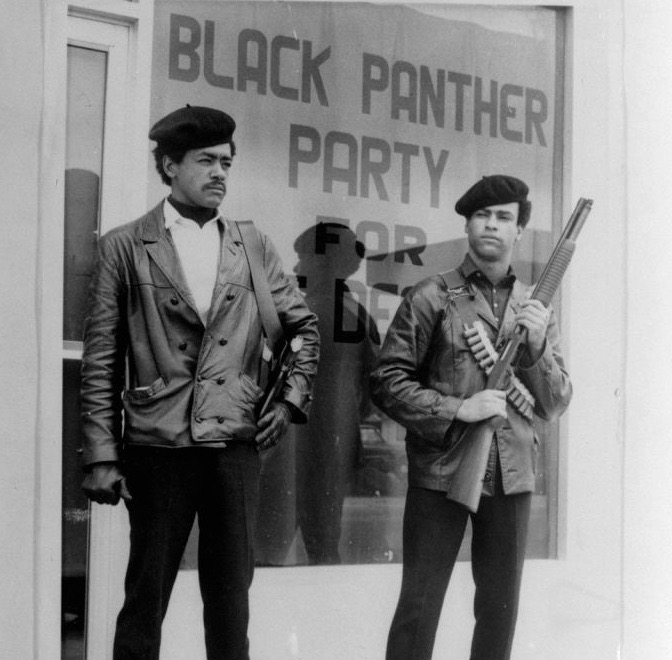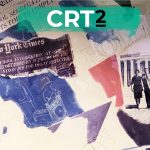
With tens of thousands of Americans dying every year from gun-related violence, firearm regulation is at the center of American political debate. Recently, the U.S. Supreme Court weighed in on this conversation by expanding an individual’s right to bear arms under the Second Amendment in New York Rife & Pistol Ass’n v. Bruen (2022).
In this episode, we use critical race theory as a tool to explore the history of the Second Amendment, firearm ownership, and gun control policies in the United States. How are firearm regulations bound up in the legal and ideological infrastructure of white supremacy? What does the history of the Second Amendment tell us about race and racism in this country?

Featuring

Meghna Philip
Public Defender, Co-Author of Amicus Brief in Bruen
“The way that the criminal law approaches issues… in [New York City] and in our contemporary time in America is… to aggressively surveil and police and prosecute low income communities. … And so there’s like a direct thread between this… licensing scheme, and then this… churning of people through this really violent system”
Jelani Cobb
Dean of the Columbia Journalism School
“The people who are most likely to be killed by gun violence are also the people most likely to be penalized for having access to firearms. Most of the people who are killed… in gun homicides are people who cannot legally carry a firearm. … [W]hat you see is… a discriminatory regime that results in these kinds of outcomes.”
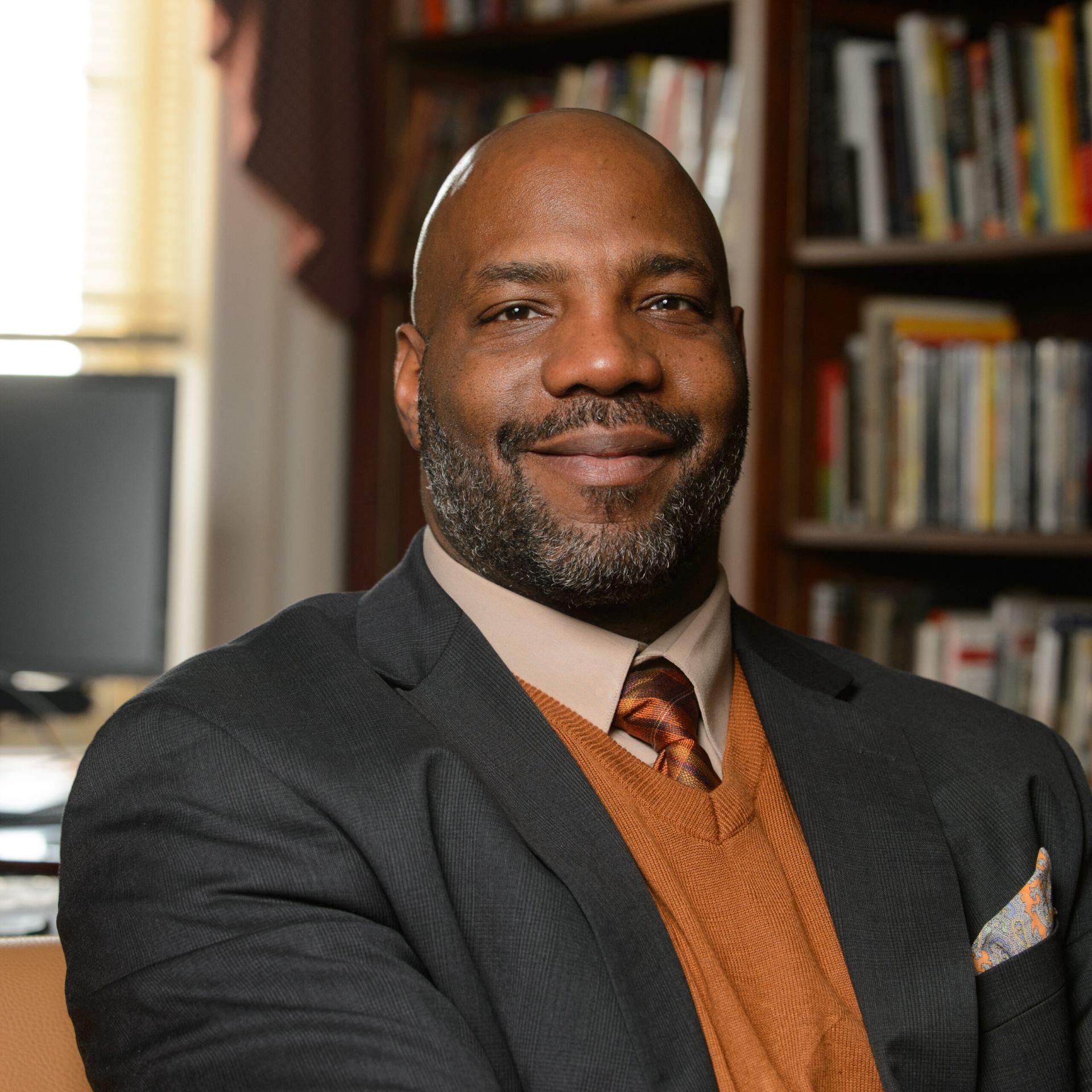
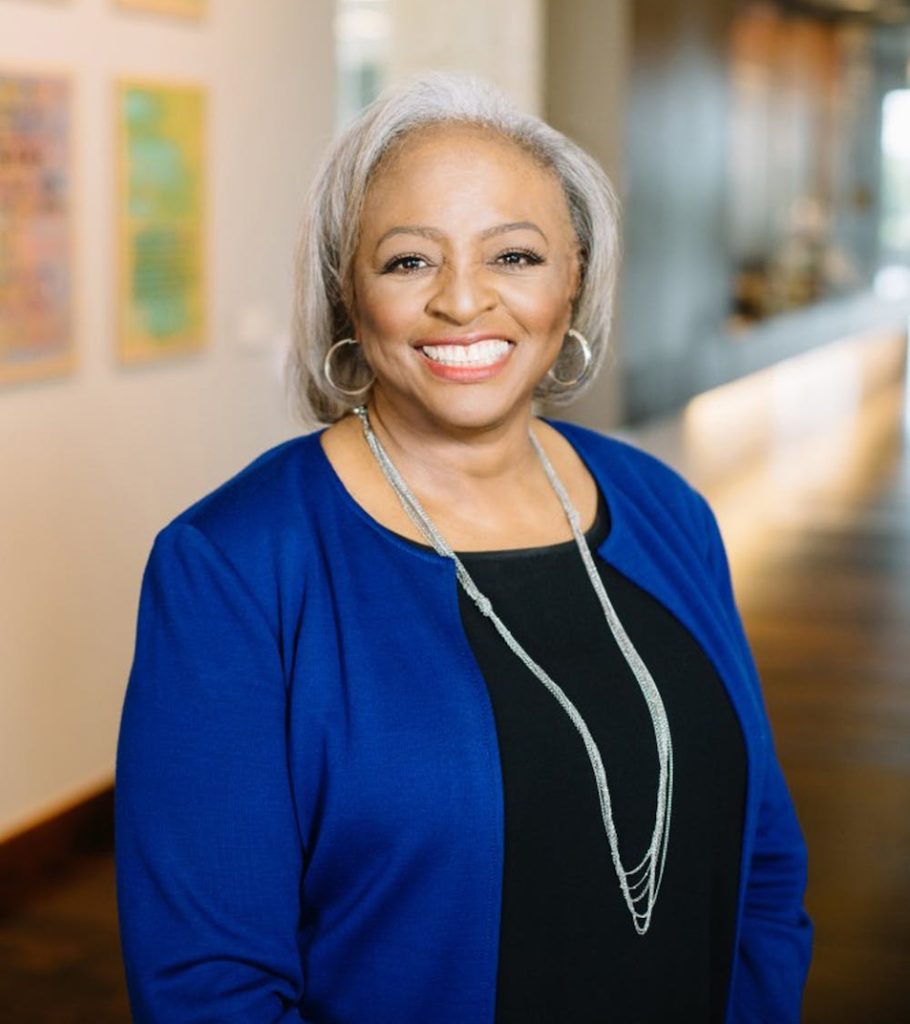
Dr. Carol Anderson
Professor of African American Studies, Emory University
“[S]itting in the Bill of Rights, is the right to contain and control Black people, the right to deny people their civil rights, the right to deny Black people the right to the pursuit of life, liberty, and the pursuit of happiness. That’s what the Second Amendment really is. It is steeped in anti Blackness, steeped in the fear of Black people.”
Alice Ristroph
Professor of Law, Brooklyn Law School
“Who will we label as violent? Who do we think is dangerous? What kind of predictions are we going to make about who’s going to harm us? … Race influences those judgments. … In embracing an individual right to bear arms, the Supreme Court did so along this law abiding citizens versus criminals divide.”

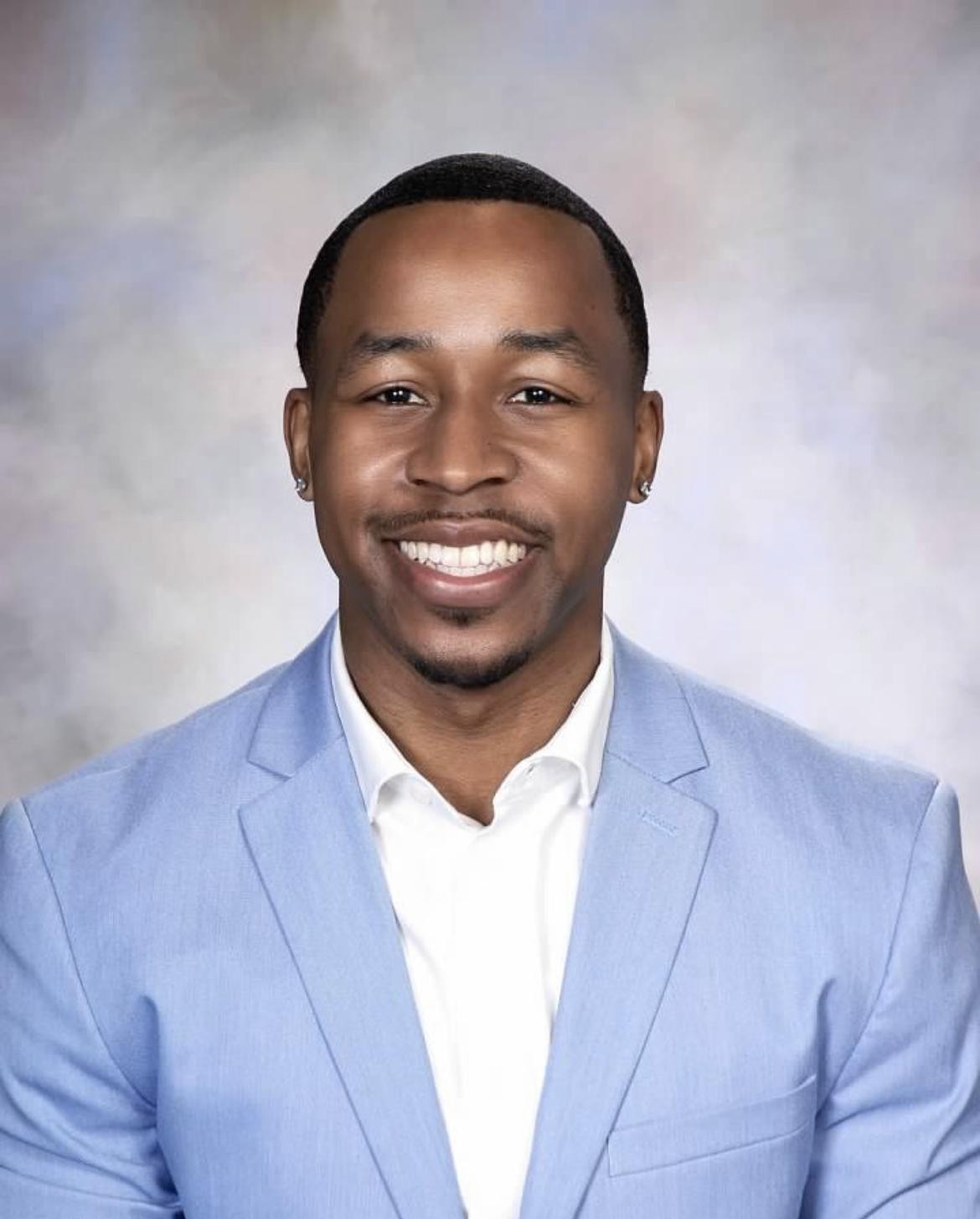
Jarrell Daniels
Founder & Program Director, Justice Ambassadors Youth Council, Columbia Center for Justice
“Guns are really easy to get a hold of… when you live in a poor community. … I bought my first gun when I was thirteen. … I want[ed] stability. I want[ed] people to take me seriously. … I had to explain to my mother in real time, ‘Ma, do you want it to be me? Or do you want it to be somebody else.’ … I made it really clear, I’m not going to be a victim to gun violence. So I’m going to carry this gun everywhere I go.”
“A well regulated Militia, being necessary to the security of a free State, the right of the people to keep and bear Arms, shall not be infringed.“
Second Amendment, U.S. Constitution (1791)
Oral Argument in New York Rifle & Pistol Ass’n v. Bruen (2022)
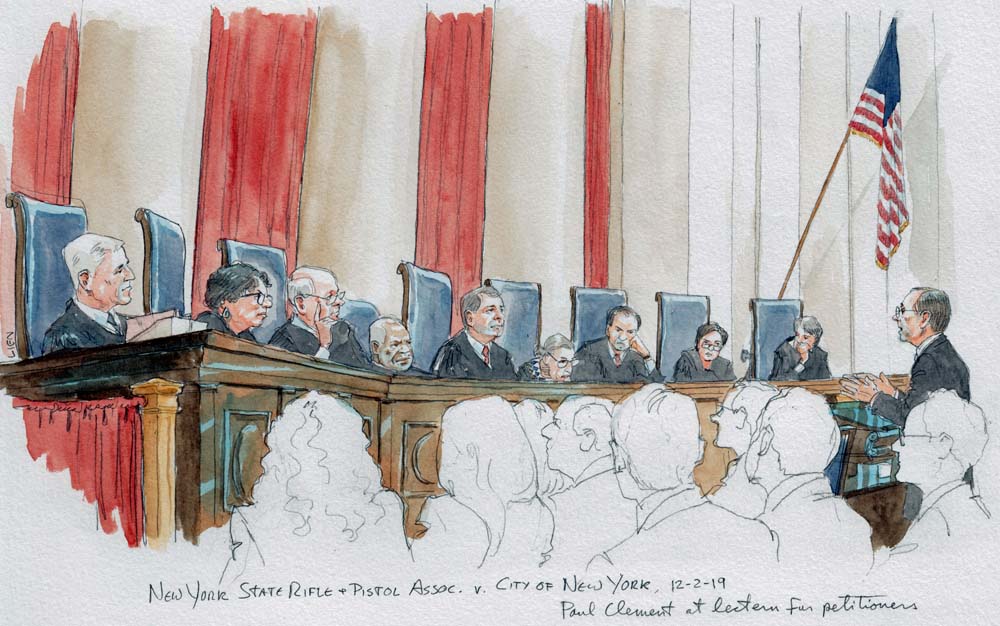
Gun Violence in America By the Numbers
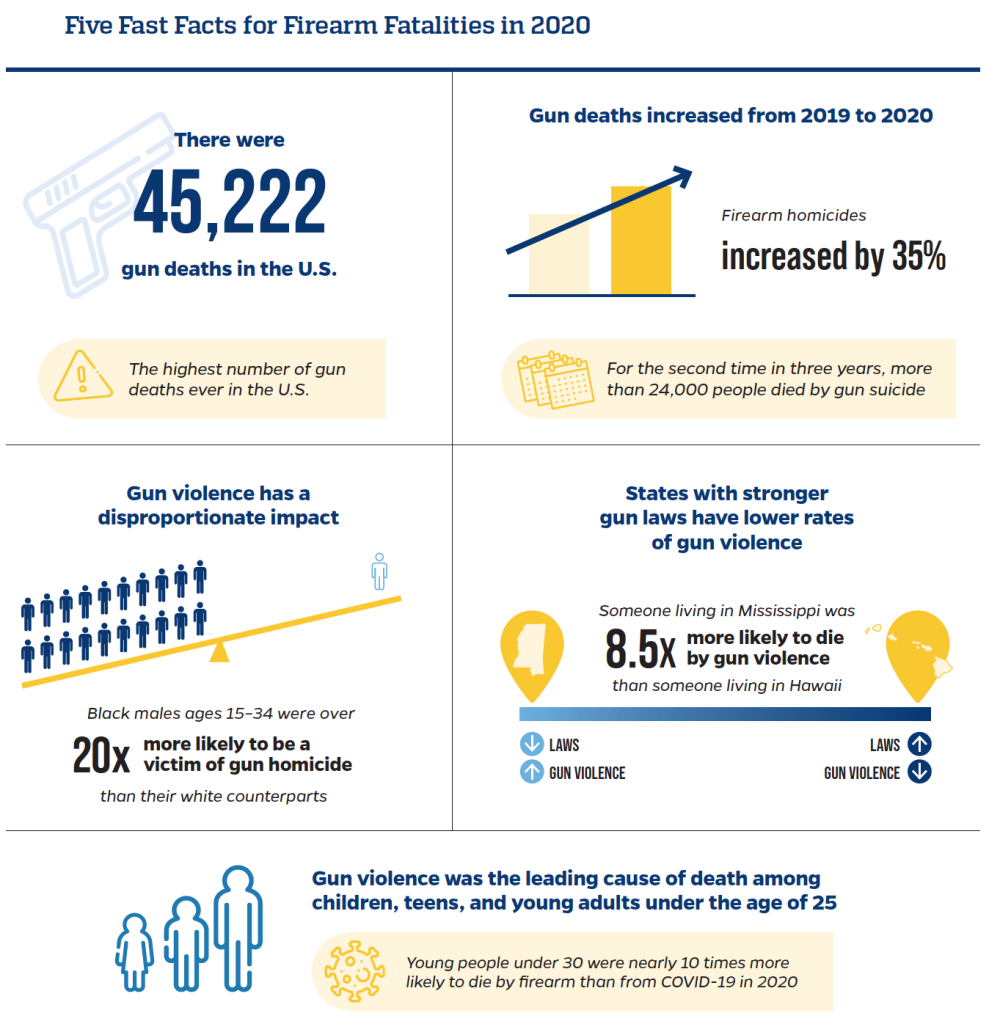
Gun violence was a leading cause of death in 2020.
Black people are at highest risk for gun homicide. They were more than 12 times more likely to be a victim of gun homicide than white people.
Young Black males (15–34) are disproportionately impacted—although they represent just 2% of the total U.S. population, they accounted for 38% of all gun homicide fatalities in 2020. Their rate of firearm homicide was almost 21 times higher than white males of the same age group.
Source: Johns Hopkins Center for Gun Violence Solutions. (2022). A Year in Review: 2020 Gun Deaths in the U.S.
The Criminalization of Black Gun Ownership Throughout History
The Slave Codes
The Stono Rebellion was the largest slave revolt in the southern colonies prior to the American Revolution. After seizing weapons from a firearm shop near Charleston, South Carolina, a group of approximately 20 enslaved people marched south—liberating other captives along the way. The group was eventually overtaken and slaughtered by a white militia.
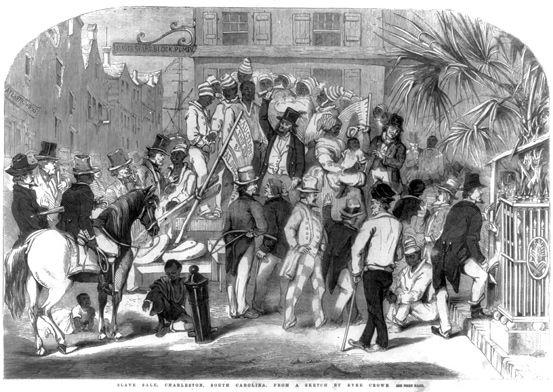
The Stono Rebellion inspired the South Carolina Assembly to enact the Negro Act of 1740—which revoked all forms of civil rights enjoyed by enslaved people. Among other things, the law prohibited enslaved people from growing their own food, learning to read or write, moving freely, earning money, or assembling in groups. The Act authorized white slaveholders to whip and kill any enslaved person who demonstrated rebelliousness.
The Negro Act of 1740 became the model for other “Slave Codes” enacted throughout the American South. A common provision in these codes prohibited enslaved people from possessing firearms.
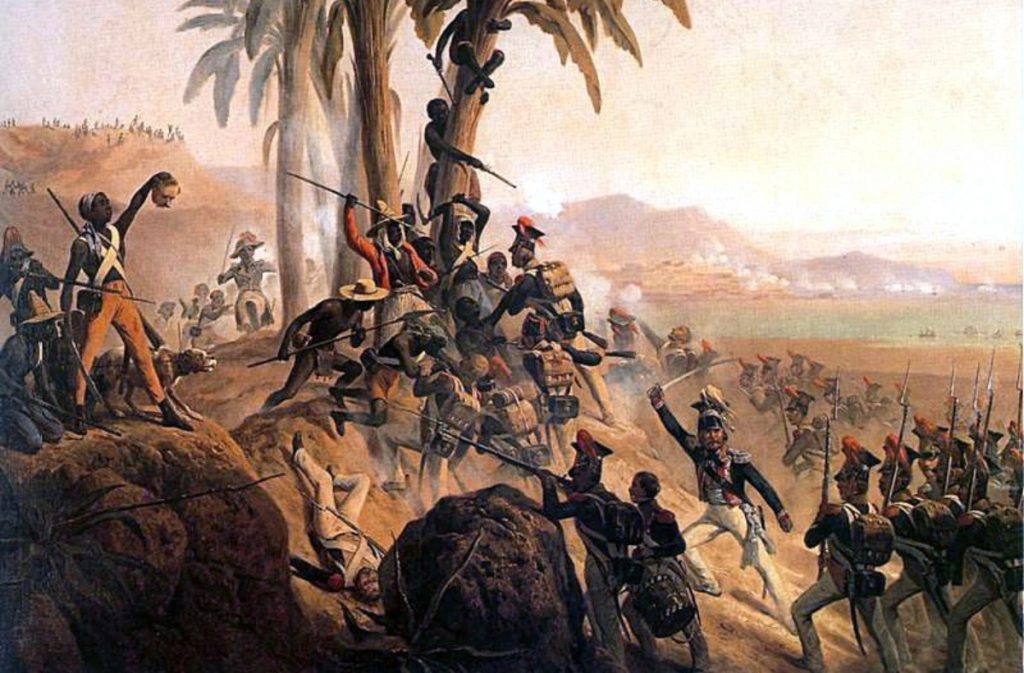
The outbreak of the Haitian Revolution in 1791 enflamed American slaveholders’ fears of slave revolt.
A letter written by founding father Charles Pinckney, governor of South Carolina, in September 1791 to President Washington betrays those anxieties.
Dear Sir,
… [A]n occasion makes it necessary for me to address you again, on the subject of the inclosed application to me from the general Assembly of St Domingo [i.e., the French colonial government of St. Dominique (modern day Haiti)]—By these inclosures you will percieve the wretched & distressed situation in which these unhappy people are, and I am afraid if not checked in time it is a flame which will extend to all the neighbouring islands, and may eventually prove not a very pleasing or agreeable example to the Southern States…. The detail of the almost indiscriminate Slaughter of all the whites who had fallen into their hands—The conflagration of the largest & most valuable Sugar Estates on the Island—The general destruction of property, & a probable famine are particularly unpleasant to us who live in Countries where Slaves abound.
Source: National Archives
The Black Codes
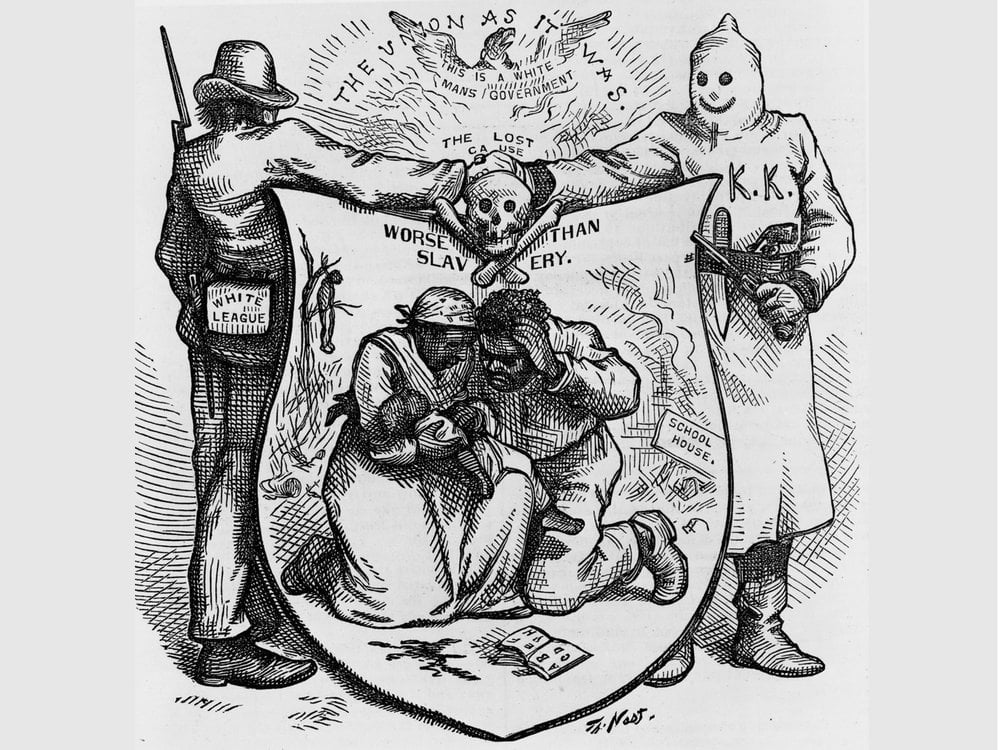
After the Civil War, the southern states quickly adopted the Black Codes—laws designed to reestablish white supremacy by restricting Black freedom. (What Douglas Blackmon calls “slavery by another name.”) A common provision in such regulations prohibited Black people from possessing firearms.
To enforce these bans, gangs of white supremacists – including the infamous Klu Klux Klan – terrorized Black communities. In January 1866, Harper’s Weekly reported that in Mississippi, these domestic terrorists had “seized every gun and pistol found in the hands of the (so called) freedmen” in various parts of the state.
The Mulford Act
In 1967, the California state legislature passed Assembly Bill 1591, the Mulford Act, which prohibited the public carrying of loaded firearms without a permit. The bill was named after Republican assemblyman Don Mulford, and signed into law by then governor of California, Ronald Regan.
The law was explicitly crafted with the goal of disarming members of the Black Panther Party (BPP), who sought to protect Black individuals from police brutality by conducting armed patrols of Black neighborhoods in Oakland. Members of the BPP would listen to police scanners and rush to the scene of an arrest, law books in hand, to to inform the person being arrested of their constitutional rights. They openly carried firearms (as permitted by California law) and were careful to stand no closer than ten feet from the police (as required by state statute). The Mulford Act sought to abolish these “copwatching” patrols.
Members of the BPP marched on the California State Capitol in 1967 to protest the bill. Many were arrested and charged with conspiracy to disrupt a legislative session.
“We believe we can end police brutality in our Black community by organizing Black self defense groups that are dedicated to defending our Black community from racist police oppression and brutality. The Second Amendment of the Constitution of the United States gives us a right to bear arms. We therefore believe that all Black people should arm themselves for self defense.”
“What We Want Now! What We Believe” (The Black Panther Party’s Ten Point Program), 1967
Present Day
On July 16, 2016, Philando Castile, a 34-year-old Black man, was shot and killed by police during a traffic stop in a suburb of Saint Paul, Minnesota. After handing over his license and registration, Castile informed the officer that he had a firearm in the car. (Castile was licensed to carry.) Less than 15 seconds later, the officer fired seven shots at point blank range into Castile – killing him. Castile’s girlfriend, Diamond Reynolds, live-streamed the encounter on Facebook. Her four-year-old daughter witnessed the murder from the backseat of the car.
In the wake of Castile’s death, the National Rifle Association (NRA) remained noticeably silent. Castile had been following NRA guidelines when he informed the officer of the gun in his car.
In 2017, the officer who murdered Castile was acquitted by a jury on all counts.
Meanwhile, the NRA had no qualms about defending Kyle Rittenhouse, a seventeen-year old white vigilante from Illinois who shot three unarmed protesters at a Black Lives Matter rally in Kenosha, Wisconsin. Rittenhouse became a cause célèbre for right-wing media pundits and politicians; he appeared on Tucker Carlson’s Fox News program, and met with former President Trump.
In 2021, Rittenhouse was acquitted by a jury on all counts.
Uncertain Futures – Political Life and an Active Court
Americans continue to grapple with the questions posed by gun violence, the criminal legal system, and anti-Blackness in the law. Following the civil-rights protests of 2020, many parts of the country have witnessed a counterreaction, with states and cities across the U.S. contending with pushes to increase the reach and punishment of the criminal legal system. Progressive prosecutors have faced pressure to leave or been ousted in favor of tough-on-crime politicians in places like San Francisco, Philadelphia, and Seattle. Policies enacted to decrease incarceration, such as efforts to end cash bail and to limit pre-trial detention have faced stiff criticism in states like Illinois and New York. At the same time, gun control and so-called “gun-rights” advocates continue to debate, not always centered on the reality of the criminal legal system.
Meanwhile, courts around the country have been left to deal with the fallout of New York State Rifle and Pistol Ass’n v. Bruen (2022). Justice Thomas created a new test to determine the constitutionality of firearm regulations, but the consequences of the test have yet to be seen. And though the future of the 2nd Amendment is unknown, it is clear that the Supreme Court has not abandoned its interest in the “right to bear arms.” This term, the Supreme Court took its fourth 2nd Amendment case, United States v. Rahimi, which is set for argument in November. In that case, the Court will contend with the question of whether the Federal Government may prohibit firearm ownership of people who have domestic-violence restraining orders in force against them. And like in New York State Rifle Ass’n v. Bruen (2022), the court has made clear that it focuses the 2nd Amendment on the intersection between the criminal law and individual possession.
Resources
Jarrell Daniels, “What Prosecutors and Incarcerated People Can Learn From Each Other,” TED Talk, June 25, 2019
Carol Anderson, The Second: Race & Guns in A Fatally Unequal America, 2021
Jelani Cobb, “The Atrocity of American Gun Culture,” The New Yorker, March 29, 2022
Alice Ristroph, “The Second Amendment in a Carceral State,” 116 Nw. U. L. Rev. 203 (2021).
Adam Winkler, “The Secret History of Guns,” The Atlantic, September 2011
NPR, “These Are the Faces of the Rising Number of Black Gun Owners in the U.S.” (October 2022)
David Olson, “Illegal Firearm Possession: A Reflection on Policies and Practices that May Miss the Mark and Exacerbate Racial Disparity in the Justice System,” Duke Center for Firearms Law, Jan. 19, 2022
Credits
Production
Written, edited, and produced by Harry Reis, Elias Passas, Drew Brazer, and Christopher Sina Faroghi.
References
Legal Materials, Articles, Books
Alice Ristroph, “The Second Amendment in a Carceral State,” 116 Nw. U. L. Rev. 203 (2021).
Adam Winkler, “Racist Gun Laws and the Second Amendment,” 135 Harv. L. Rev. F. 537, June 2022
Adam Winkler, “The Secret History of Guns,” The Atlantic, September 2011
Carol Anderson, The Second: Race & Guns in A Fatally Unequal America, 2021
David Olson, “Illegal Firearm Possession: A Reflection on Policies and Practices that May Miss the Mark and Exacerbate Racial Disparity in the Justice System,” Duke Center for Firearms Law, Jan. 19, 2022
Jelani Cobb, “The Atrocity of American Gun Culture,” The New Yorker, March 29, 2022
John Hopkins Center for Gun Violence Solutions, “A Year in Review: 2020 Gun Deaths in the U.S.,” April 28, 2022
New York Pistol & Rifle Ass’n v. Bruen, 142 S.Ct. 2111(2022)
National Archives, “To George Washington from Charles Pickney, 20 September 1791,” Founders Online, accessed December 22, 2022
NPR, “These Are the Faces of the Rising Number of Black Gun Owners in the U.S.” (October 2022)
Public Defender Amicus Brief, New York Rifle & Pistol Ass’n v. Bruen (2022)
Steve Ekwall, “The Racist Origin of U.S. Gun Control: Laws Designed to Disarm Slaves, Freedmen, and African-Americans,” Sedgwick County, accessed December 22, 2022
University of California Press Blog, “The Black Panther Party’s Ten Point Program,” accessed December 22, 2022
Gregory Parks, “When CRT Meets 2A” https://firearmslaw.duke.edu/2022/01/when-crt-meets-2a (January 2022)
Video
“Black Panthers & the NRA,” Youtube, accessed December 22, 2022
CNN, “Combined Videos Show Fatal Castile Shooting,” Youtube, accessed December 22, 2022
Encyclopedia Brittanica, “Stono Rebellion,” accessed December 22, 2022
Jarrell Daniels, “What Prosecutors and Incarcerated People Can Learn From Each Other,” TED Talk, Youtube, June 25, 2019
The Daily Show with Trevor Noah, “So Much News, So Little Time – NRA Silence on Philando Castile,” Youtube, June 19, 2017, accessed December 22, 2022
Washington Post, “Anger and Elation in Kenosha after Rittenhouse Acquittal,” Youtube, November 19, 2021, accessed December 22, 2022
Audio
ABC News, “Pro-gun Rally at Virginia Capital Draws Thousands of Armed Protestors | Nightline,” YouTube, 7:35, published Jan. 21, 2020
ABC7 Eyewitness News, “New Year’s 1981 Opens With NYC Murder Wave After Historically Bloody 1980,” YouTube, 5:47, published online Jan. 1, 2020
Pacifica Radio Archives, “Bobby Seale / for the defense of Huey Newton,” 1968-07-16, American Archive of Public Broadcasting (GBH and the Library of Congress), Boston, MA and Washington, DC, accessed December 28, 2022
CBS Reports, “Ku Klux Klan: The Invisible Empire,” CSPAN Archival Video, 7:38, 1965
Chelsea Hoffman 1, “Jessica Heeringa 911 Call,” Soundcloud track, 1:50, published 2013, authorized with Creative Commons License
Childish Gambino, This is America ([Merlin] Liberation Music, SME 2018)
Click On Detroit | Local 4 | WDIV, “1975 Detroit Crime Special,” YouTube, 15:30, published online April 6, 2018
Comstock Club Speaker Series, “Don Mulford, Simon Casady, Capt. Robert F. Hunt, Claude Batault, Ara Parseghian, Edward S. Montgomary,” Sacramento Center for History Archive, 1:57:35, 1965
Cop Block, “Ademo’s Arraignment on Felony Wiretapping Charges – For Recording Public Officials,” YouTube, 8:22, published Dec. 17, 2011, authorized with Creative Commons License
Craig Smith, “G28-25-Crowd Walla in Courtroom.wav,” sound recording, 2:40, published Aug. 26, 2018, authorized with Creative Commons License
Dayreamingvice, “Fuck the system,” Soundcloud track, 3:22, 2012, authorized with Creative Commons License
Defense Flash News, “President Trump Delivers Remarks on Operation Legend: Combatting Violent Crime in American Cities,” YouTube, 32:44, published July 23, 2020, authorized with Creative Commons License
Felix.blume, “Tent jail ambiance with prisoner voices, steps on gravel, wind tunnel, a plane, some laughs and loudspeaker announcement at Phoenix prison,” sound recording, 4:56, recorded September 2013, authorized with Creative Commons License
F3 Studio, “Cinematic Horror Sound Effects | No Copyright | Horror HQ,” YouTube, 0:52, published Sep. 18, 2022, authorized with Creative Commons License
JB Worship Moments, “Cello + Violin + Piano Spontaneous Instrumental – UPPERROOM,” YouTube, 11:37, published April 11, 2021, authorized with Creative Commons License
JDMUSIC, “Horror Ambiance | Free Ominous Music (Synthwave Royalty Free – Synthwave No Copyright)[JDMUSIC],” YouTube, 4:13, published June 24, 2020, authorized with Creative Commons License.
KCRA TV, “The Black Panthers No. 1,” Sacramento Center for History Archive, 30:12, 1967
Kd_jack, “Cell Door 2.aiff,” Sound effect recording, 0:09, published Jan. 17th, 2014, authorized with Creative Commons License
Lena_orsa, “The World Needs Peace,” audio recording, 4:31, published Aug. 6, 2018, authorized with Creative Commons License
Lesfm, “Please Calm My Mind,” audio recording, 2:55, published Nov. 14, 2022, authorized with Creative Commons License
Lobo Loco, “Relaxing instrumental blues music,” YouTube, 3:30, published Nov. 18, 2020, authorized with Creative Commons License
NBC News, “In-Depth Look At Life on Rikers Island: ‘Hell, Plain and Simple’,” YouTube, 8:18, published Feb. 2022
NBC4 News, “NYC NBC 4 News Cast from 8/24/1986,” YouTube, 29:08, published online Jan. 8, 2020
NiRobi, No Love (Prod. by Tone Jonez), Soundcloud track, 4:05, published 2015, authorized with Creative Commons License
OER Project, “The Haitian Revolution and Its Causes | World History Project,” YouTube, 12:16, published July 7, 2021
Oral Argument, New York State Rifle & Pistol Assn. v. Bruen, 142 S. Ct. 2111 (2022)
Paris, Panther Power, on The Devil Made Me Do It (Guerilla Funk Recordings 2003)
Pearly Chillz, “Tape Rewind | Free Sound Effect for Vlogs | No Copyright,” YouTube, 0:07, published Nov. 19, 2019, authorized with Creative Commons License
Played N Faved – Sound Effects & Stock Footage, “All Prison Cell Door Sound Effects / Sound of a Cell Door Closing / Various Metal Prison Door Sounds,” YouTube, 1:21, published April 9, 2021, authorized with Creative Commons License
ReasonTV, “Do Studies Show Gun Control Works?,” YouTube, 16:12, published March 31, 2022, authorized with Creative Commons License
Reel America, “Watts – Riot or Revolt?,” C-SPAN Video Archive, 53:41, published Aug. 16, 2015
“The Black Panther Party in Sacramento,” 1968-05-03, Pacifica Radio Archives, American Archive of Public Broadcasting (GBH and the Library of Congress), Boston, MA and Washington, DC, accessed December 28, 2022
The Soul of Music, “Empty World – Sad Emotional Dramatic Music,” YouTube, 6:59, published April 18, 2021, authorized with Creative Commons License
The Soul of Music, “Classical Relaxing Cello Music Soothing Instrumental Background Pieces to Study Work or Relax,” YouTube, 11:26, published Aug. 11, 2021, authorized with Creative Commons License
Times of India, “When Rajpavardhan Rathore Gave a Shooting Tutorial for His Fans,” YouTube, 2:43, published June 6, 2019, authorized with Creative Commons License
Under the Home, “Sounds of the Revolutionary War: Gunfire, Fifes, and Drums,” YouTube, 2:04, published Sep. 20, 2017, authorized with Creative Commons License
William Barker, “Give Me Liberty or Give Me Death,” YouTube, 8:58, Libravox Recording, published July, 23, 2012, authorized with Creative Commons License
We Have A Tripod, “Cinematic Music [No Copyright & Royalty Free] Mystery Investigation | INFADOS,” YouTube, 3:55, published Sep. 4, 2017, authorized with Creative Commons License
YouTube CopyRight Free Music Team, “Copyright Free Music | Harpischord Fugue – Sir Cubworth,” YouTube, 2:26, published April, 19, 2022, authorized with Creative Commons License

